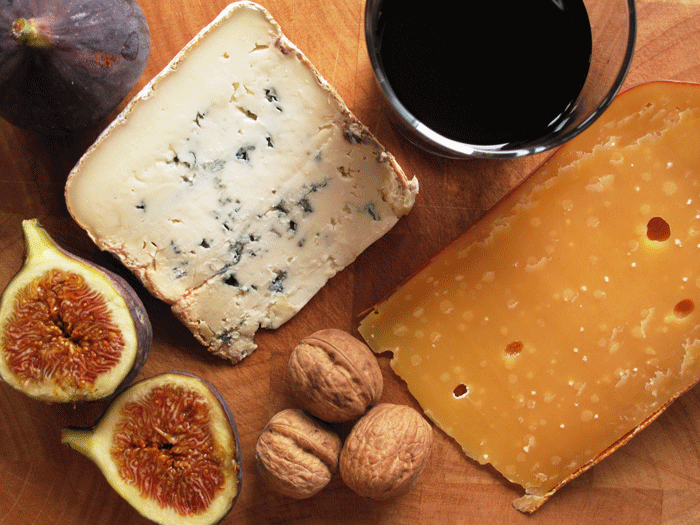Pairing wine with cheese
Author: Susie Carter
With such a wide range of flavours and textures among the different cheeses, it’s only natural that there’s no single catch-all wine to pair with them. This can be an issue when it’s time to wheel out the cheeseboard, which is why I prefer to serve an impressively-sized chunk of just one or two cheeses and pick a wine that’s really going to do them justice.
Rich, mouth-coating soft cheeses such as Brie or Délice de Bourgogne work really well with a full-bodied, buttery Chardonnay. Malolactic fermentation and time in oak adds weight and complimentary dairy flavours, yet there’s still enough acidity to balance the richness. Camembert-style cheeses such as Tunworth are some of the trickiest to match, as they’re even more mouth-coating than Brie and can have a touch of bitter ammonia on the finish. Try them with Champagne and let the bubbles scrub your palate clean.
Blue cheeses tend to be the saltiest and also have a touch of bitterness to them, so they partner most successfully with sweet and fortified wines such as Sauternes, Tawny Port or Tokaji. Tawny Port also works brilliantly with very mature, fudgy cheeses such as vintage Gouda or cave-aged Gruyère. The sweetness in the wine complements the salt and there’s plenty of oxidative flavour to match the nuttiness in the cheese.
As a cheese ages, some of the water content evaporates and like a sauce reducing on the hob, this concentrates the flavour as well as the salt content, which is why a fresh young goat’s cheese pairs well with a fresh young wine like Sancerre and the opposite is also true. As with wine, aging a cheese also brings about new flavours, for example, the nutty flavour in a well-aged Comté. This is where the reds come into their own – try an extra vieille Mimolette with mature red Bordeaux or a nine-month-old Ossau Iraty with a Rioja Gran Reserva.
If I picked just one wine and two cheeses to accompany, it would have to be Berry Bros. & Rudd William Pickering, 20-year-old, Tawny Port, paired with five-year-old Gouda and a creamy, carefully aged hunk of Stitchelton. That said, I’d be awfully tempted to add a bottle of Pouilly Fuissé and the sort of ultra-ripe Brie de Meaux that slowly creeps its way across the board over the course of the evening.
If you can’t bear not to have an enormous cheeseboard groaning under the weight of five or six different cheeses, choose perhaps three wines that will each work with a couple of the cheeses and give your guests the choice. Some people have a very definite allegiance to a particular type of cheese or wine, while others (including most of my dinner guests) will be keen to try a bit of everything and experiment for themselves. In fact, this is one of the best ways to experiment with food and wine matching and can provide the basis for the whole evening. Do as the French do and serve a big green salad on the side, dressed simply with walnut oil and maybe think about something simple and fruity for dessert as a palate cleanser.
Read Susie’s first three posts on the rules of food and wine matching, pairing wine with chicken and pairing wine with game.
Learn more about food and wine matching with our range of events exploring the perfect pairings.



